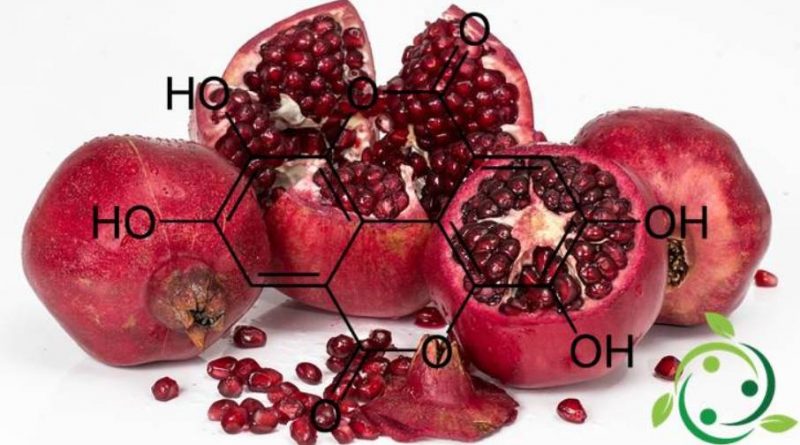Ellagic Acid
Ellagic Acid
Ellagic acid, whose term in the IUPAC nomenclature is: 2,3,7,8-tetrahydroxy-chromeno [5,4,3-cde] chromene-5,10-dione and whose brute or molecular formula is: C14H6O8 , is a natural phenolic antioxidant present in numerous fruits and vegetables. From the chemical point of view, ellagic acid is the dilatone of hexahydroxyphenyl acid.
Ellagic acid was discovered in 1831 by the chemist Henri Braconnot.
Ellagic acid is found in nature and is found in numerous plant species.
Ellagic acid is found in Quercus species, including: the white oak of North America (Quercus alba) and the European red oak (Quercus robur). The macrophyte Myriophyllum spicatum also produces ellagic acid, and we also find it in the medicinal mushroom Phellinus linteus.
Plants produce ellagic acid by hydrolysis of tannins such as the ellagitannin and geraniin.
Ellagic acid is a component of pomegranate fruit juice, it is a polyphenol of vegetable origin that has antioxidant properties. Pomegranate juice and ellagic acid have been reported for their suppressive properties against various types of cancer, including prostate cancer.
However, their chemopreventive effects on the development and progression of prostate cancer have not yet been precisely established in vivo.
Ellagic acid can be extracted from the peel of the pomegranate. It is also present in numerous varieties of fruits and vegetables, such as raspberries, strawberries, cranberries and walnuts. The beneficial effects of pomegranate have been known for thousands of years in the East.
The highest levels of ellagic acid are found in berries and nuts, in particular: blackberries, ossicocchi (cranberries), pecans, pomegranates, raspberries, strawberries, walnuts, Goji berries and grapes. It is also found in peaches and other food plants.
The antiproliferative and antioxidant properties of ellagic acid have been a stimulus for research aimed at identifying its potential positive effects on health.
In fact, nowadays, numerous publications describe the effects of ellagic acid. Its properties are used for therapeutic purposes. It would in fact inhibit the proliferation of cancer cells. It would play a major role in the prevention of skin, lung and esophagus cancer. Its antioxidant properties make it a first choice ingredient in the cosmetic field, especially for dermatological products.
Warning: The information given is not medical advice and may not be accurate. The contents are for illustrative purposes only and do not replace medical advice.

